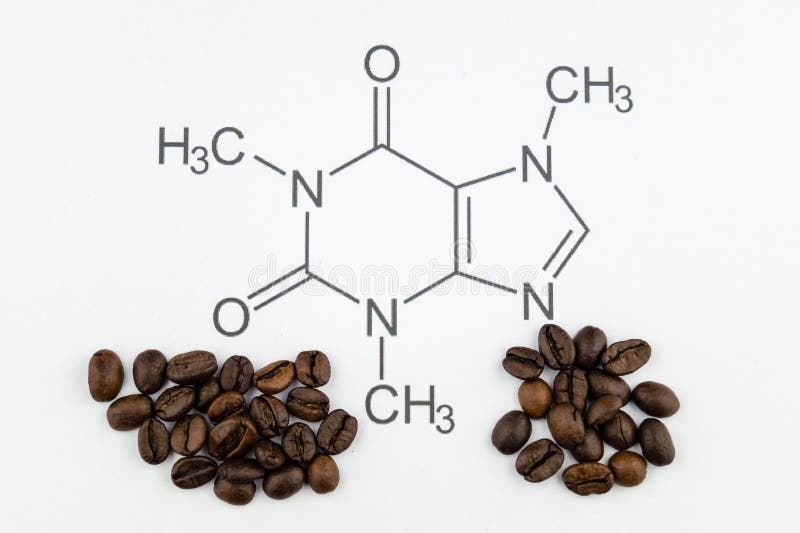


The water, containing many other compounds including caffeine and flavor compounds, is then passed through a charcoal filter. Water extraction: Raw, green coffee beans are soaked in distilled water for an extended period of time.There are now three main processes that have superseded the use of the previous solvents. Common solvents that were used include Benzene, chloroform, trichloroethylene, and dichloromethane. A few of these processes are no longer used because of the health risks, environmental impact, cost, and flavor changes that were associated with the solvents. Today caffeine is easily extracted and used to make a variety of products that are consumed on a daily basis.Įxtracting caffeine from coffee to produce decaffeinated coffee and a caffeine powder can be done many different ways. These berries were later dried and called “coffee beans.”Ĭaffeine was first extracted from cocoa beans into its purest form, a white powder, in the 1820s by a German Scientist named Friedrich Ferdinand Runge. For the next few days he watched them, and noted that they were grazing on small berries. The folk stories passed between generations says that a farmer, who had recentlly moved his goats to a new pasture found them to be restless and ancy. One of the most eccentric caffeine findings was in Ethiopia. Each country has its own story and source of caffeine. Through extraction processes, that are explained in more detail below, individuals can enjoy the taste of beverages, like coffee, without feeling overstimulated.Ĭaffeine has been a part of our global history for thousands of years. To combat the sense of “turbo-speed” decaffeinated products are now more widely consumed. As a result of excess caffeine consumption you may feel like your mind is racing and your thoughts are coming much faster, this feeling can at times be very overwhelming. Caffeine uses the same biochemical mechanisms as these other drugs to stimulate brain function. Making caffeine one of the most widely consumed psychoactive agents in the world!Ĭaffeine is a drug like substance that shares traits with other addictive substances such as amphetamines, cocaine, and heroin. Much of the modern population uses caffeine as a stimulant, exciting the brain and nervous system while fighting fatigue. In its pure form caffeine is a white powder that is very bitter. Caffeine is a naturally occurring stimulant that can be isolated from over sixty plants, but can also be made synthetically and added to our everyday food products and medications. https:/ /10.1080/ word “caffeine” originated from the German word “ kaffee” and the French word “ café”, both directly translating to mean “coffee.” Caffeine’s chemical name is 1,3,7-trimethylxanthine, based on its formula, C 8H 10N 4O 2, and molecular structure.
#Coffee caffeine structure skin#
In recent study, we utilize both computational approach and in vitro assay to understand the protective mechanism of caffeine in skin photoaging process published in Journal Of Enzyme Inhibition And Medicinal Chemistry J Enzyme. These changes are taking places under the influence of intrinsic ageing and photoaging factors (UV-light) that further invited the enhanced activation of intracellular enzymes such as collagenases, elastases and tyrosinase. Of note, Skin ageing occurred due to deterioration or degradation of essential components of the skin such as collagen and elastase, and over production of melanin. In cosmetics, caffeine-based creams and lotions have already demonstrated to slow down the photoaging process of skin and block the ultraviolet radiation-induced skin carcinogenesis, thereby preventing the development of tumors after skin exposure to sunlight by functioning as a sunscreen. “Coffee scrubs as cosmetic products are available in the market which is useful to reduce the presence of eczema, cellulite, age spots, varicose veins, stretch marks and psoriasis-so are the perfect product for a variety of different skin conditions,” a Bean Body spokesperson said. It has already gained popularity as essential ingredient of cosmetics products because of its potential antioxidant function and anti-inflammatory ingredient, improving blood circulation, tightening and smoothing out any puffy areas by constricting blood vessels, help in reducing cellulite, lipolytic, and UV-ray protection effects, as concluded from the recent studies. Interestingly, caffeine is no more restricted to and as elixir of freshness in the cup of coffee.


 0 kommentar(er)
0 kommentar(er)
